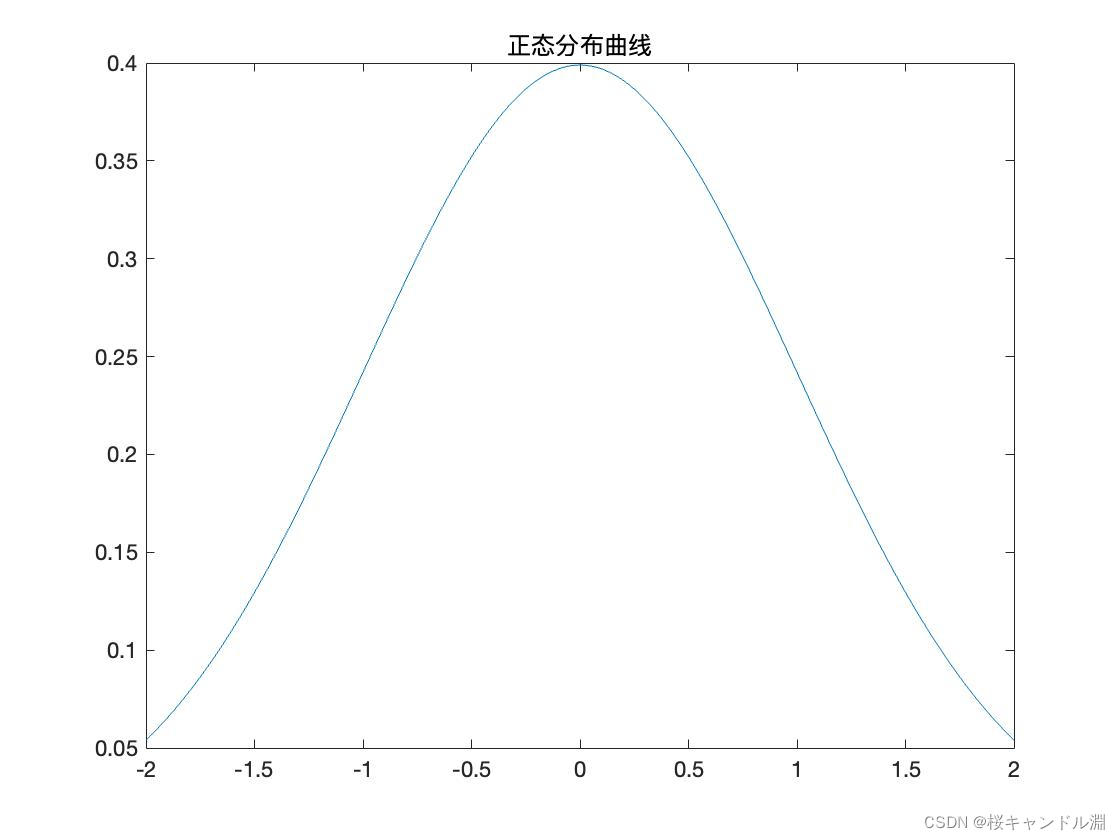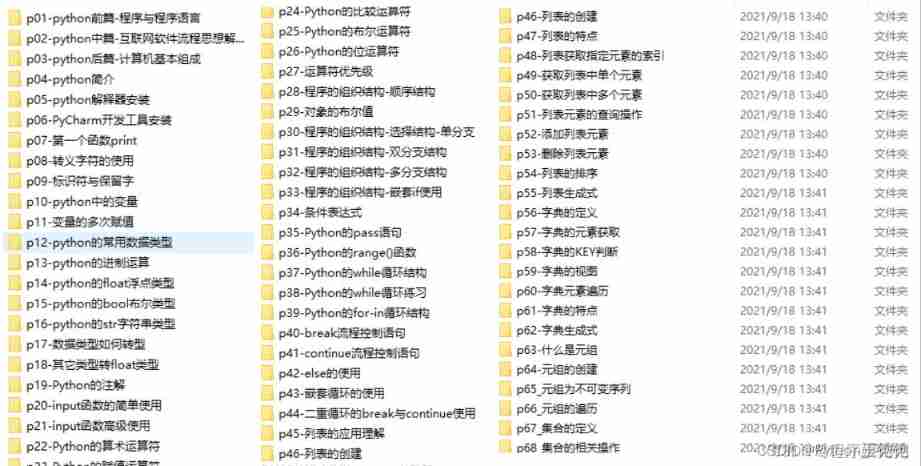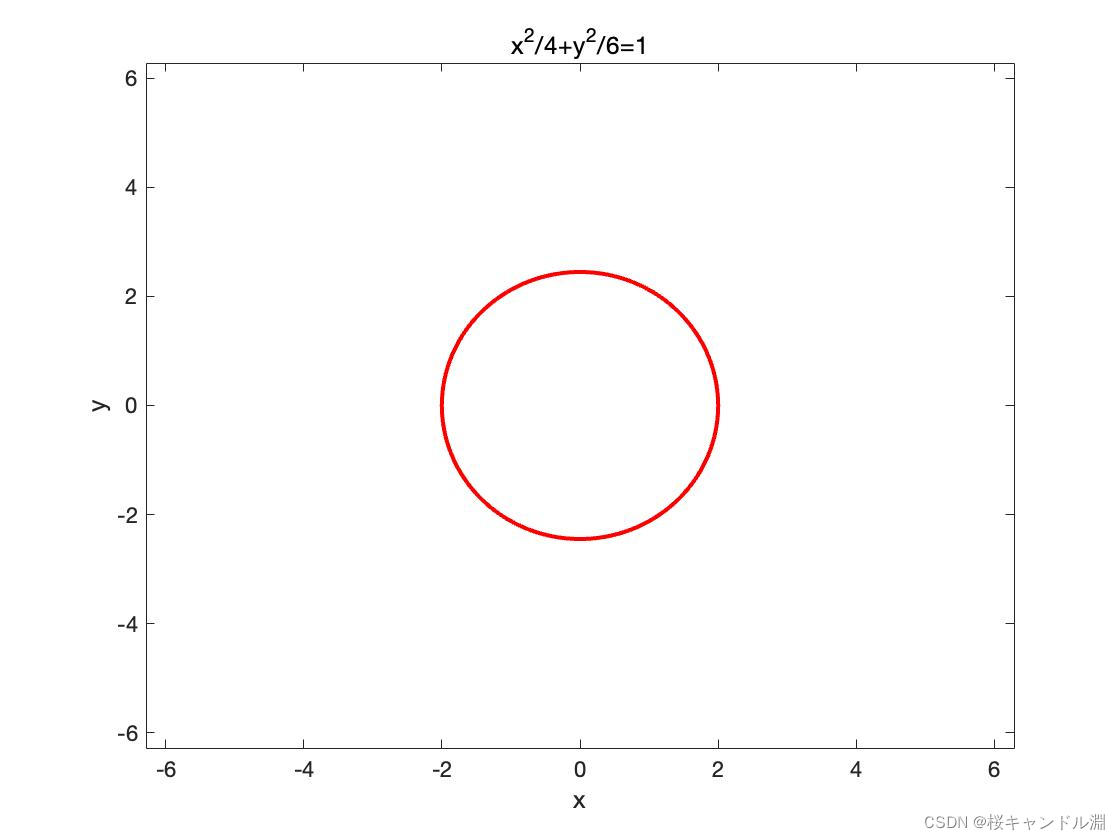当前位置:网站首页>Matlab [functions and images]
Matlab [functions and images]
2022-07-01 08:33:00 【桜キャンドルル】
Catalog
One 、 Common mathematical functions
1. Several writing methods of function representation
1. Define function variables as symbolic variables
Two 、 Representation of piecewise functions
3、 ... and 、 Use functions to draw graphics
1. Draw the function image of absolute value
2. Draw an image of the rounding function
3. Drawing piecewise functions
4. Draw a normal distribution curve
6. Draw the cube root of positive and negative numbers
7. How to draw a graph with infinity
8. How to draw implicit functions
How to set up ezplot The format of
9. Use meshgrid Draw multiple functions
1. Use compose Find compound function
2. Use subs Find compound function
12. Image with modulation curve
13. Automatically solve the equation
One 、 Common mathematical functions
name call | contain The righteous | name call | contain The righteous | name call | contain The righteous |
abs | The absolute value | asin | Anti sine | coth | Hyperbolic cotangent |
exp | Index | acos | Arccosine | asinh | Anti hyperbolic sine |
log | logarithm | atan | Anyway | acosh | Anti hyperbolic cosine |
log10 | 10 Base logarithm | acot | Inverse cotangent | atanh | Anti hyperbolic tangent |
log2 | 2 Base logarithm | sec | Secant | acoth | Inverse hyperbolic cotangent |
pow2 | 2 The next power | csc | Cosecant | sech | Hyperbolic secant |
sqrt | square root | asec | Anyway | csch | Hyperbolic cosecant |
sin | sine | acsc | Anti cosecant | asech | Inverse hyperbolic secant |
cos | cosine | sinh | Hyperbolic sine | acsch | Inverse hyperbolic cosecant |
tan | tangent | cosh | Hyperbolic cosine | ||
cot | Cotangent | tanh | Hyperbolic tangent |
A simple example

1. Several writing methods of function representation
1. Define function variables as symbolic variables
syms x
fx=sqrt(1+x^2);2. Use function command
function f=myfun(x)
f=(3-2.*x).^2.*x;
3. Using anonymous functions
[email protected](x) (x+10)Two 、 Representation of piecewise functions
Use if-else Judgment can help us implement piecewise functions
function y= w(x)
if x<0
y=x+2;
else
y=x-3;
end
end
3、 ... and 、 Use functions to draw graphics
1. Draw the function image of absolute value
# Clear the screen
clear
# Take us x Set as variable
syms x
# Use anonymous methods to create our y
[email protected](x) abs(x);
# Use fplot, The first parameter is our method , The second parameter is our argument x The scope of the
fplot(y,[-5,5])
# Keep our current graph from being reset
hold on
# Set up our x Axis labels
xlabel('x')
# Set up our y Axis labels
ylabel('y')
# Set the label of our whole picture
title('y|x|') 
2. Draw an image of the rounding function
clear
syms x
[email protected](x) floor(x);
fplot(y,[-5,5])
hold on
xlabel('x')
ylabel('y')
3. Drawing piecewise functions
clear
syms x y
[email protected](x) 2*sqrt(x);
# The third parameter is our drawing line style
fplot(y1,[0,1], '-b')
hold on
[email protected](x) 1+x;
fplot(y2,[1,5], '--og')
# Set our legend
legend('y=2*sqrt(x) ', 'y=1+x');
title(' Piecewise functions ')
xlabel('x')
ylabel('y')
# Set the range of our axes , The first and second parameters represent x The scope of the shaft
# The third and fourth parameters represent y The scope of the shaft
axis([0,5,0,5])
4. Draw a normal distribution curve
clear
x=-2:0.01:2;
y=(1/sqrt(2*pi))*exp(-x.^2/2);
#plot The function takes our x,y Pass it in and you can draw
plot(x,y)
title(' Normal distribution curve ')
5. Draw symbolic functions
clear
# Set us x Maximum value of axis
xm=5;
# Set up our x Take all from the minimum value to the maximum value , And the interval is 0.01
x=-xm:0.01:xm;
#sign For our symbolic function
y=sign(x);
# Will we x==0 Time null , Breakpoints will be formed
y(x==0)=nan;
figure
# drawing , And set the width of our line to 2
plot(x,y,'LineWidth',2)
hold on
# Draw us 0,1 Place and 0,-1 Two hollow points at
plot(0,1,'o',0,-1,'o');
# Point a point at our origin
plot(0,0,'.','MarkerSize',24)
# Name the title
title(' Symbolic function ','FontSize',16)
# Set up our x Shaft labels and y Axis labels
xlabel('\itx','FontSize',16)
ylabel('\ity','FontSize',16)
# Draw gridlines
grid on
axis([-xm,xm,-2,2])

6. Draw the cube root of positive and negative numbers
clear
% Set up x Of max Range
xm=5;
% Set up our x The range of is from -xm To xm, Spacing is 0.01
x=-xm:0.01:xm;
% Let's multiply each element of the vector y=x The third root of
y=x.^(1/3);
% mapping
figure
% Create icons with two rows and one column , And put the picture we want to draw next in the first chart
subplot(2,1,1)
% Use plot Method , And our corresponding x,y Value in , And set the width of our drawn line to 2
plot(x,y,'LineWidth',2)
% Draw our grid lines
grid on
% Title our chart
title(' Incorrect open cube for negative numbers ','FontSize',16)
% Separate our x,y The axis is titled
xlabel('\itx','FontSize',16)
ylabel('\ity','FontSize',16)
% Because we are drawing 1 It is found that the negative range of our cube root is incorrect ,
% So we need to take out our symbols separately , Then multiply by the absolute value of our original function
y=sign(x).*abs(x).^(1/3);
subplot(2,1,2)
plot(x,y,'LineWidth',2)
grid on
title(' Negative numbers open the cube correctly ','FontSize',16)
xlabel('\itx','FontSize',16)
ylabel('\ity','FontSize',16) 7. How to draw a graph with infinity
If we draw our tan(x) This happens to function
clear;
x=-5:0.01:5;
y=tan(x);
plot(x,y,'LineWidth',2)
Use ezplot, Pass our formula into , And then into our scope , You can draw pictures .
clear;
syms x
y=tan(x);
y=inline(y);
ezplot(y,[-2*pi,2*pi]); 
8. How to draw implicit functions
ezplot You can also draw implicit function images
clear;
syms x
ezplot("x^2/4+y^2/6=1");
Use axis([x Shaft Downline ,x Axis upper limit ,y Axis lower limit ,y Axis upper limit ]) You can specify the range of our coordinate axes
axis("equal") So that our axis x,y Isometric axis
How to set up ezplot The format of
Take us ezplot Then the result is passed to a parameter , And then use our set To set our ezplot The type of drawing
clear;
syms x
h=ezplot("x^2/4+y^2/6=1");
set(h,'color','r','LineWidth',2);9. Use meshgrid Draw multiple functions
Use meshgrid Can make our x,y The numbers in realize one-to-one correspondence , use meshgrid It allows us to draw multiple curves at the same time
% Logarithmic function
clear % Clear variables
xm=3; % The largest independent variable
x=0.1:0.1:xm; % Independent variable vector
a=[1/exp(1),0.5:0.5:2,exp(1),10]; % Base vector
[A,X]=meshgrid(a,x); % Base and independent variable matrix
Y=log(X)./log(A); % Logarithmic function matrix
figure % Create a graphics window
plot(x,Y,'LineWidth',2) % Draw a family of function curves
title(' Family of logarithmic function curves ','FontSize',16) % Add title
xlabel('\itx','FontSize',16) % Add abscissa
ylabel('\ity','FontSize',16) % Add ordinate
grid on % Gridding
legend([repmat('\ita\rm=',length(a),1),num2str(a')],4)% Complex legend
hold on % Keep attributes
plot(x,-log(x),'*',x,log(x),'+',x,log10(x),'x')% Redraw natural logarithm and common logarithm curve

10. Find the inverse function
Use y=finverse(y) That is to say y Become an inverse function of itself
syms x
y=x^2;
z=finverse(y);
z
11. Find compound function
1. Use compose Find compound function
g=compose(f,g)
syms x
y=x^2;
g=sin(x);
z=compose(y,g); 
syms x z
f=sin(x);
g=x^2;
compose(g,f) % Returns the compound function g(f(y))
compose(g,f,x,z) % The return argument is z 
2. Use subs Find compound function
syms x z
f=sin(x);
g=x^2;
subs(g,f) % Returns the compound function f(g(y))

12. Image with modulation curve
In front of some periodic functions , We can multiply some functions to plot our modulation curve , Let our function be constrained in two modulation curves . In the following code we use e^(-x) As our modulation curve
clc
clear
syms x
y=sin(pi*x)*exp(-x);
x=-5:0.01:5;
y=inline(y);
plot(x,y(x),x,exp(-x),x,-exp(-x),'LineWidth',2); 
13. Automatically solve the equation
syms x a b c % Define symbolic variables
x1=-2; y1=0; x2=0;y2=1; x3=1; y3=5; %3 The horizontal of the point 、 Ordinate
y=a*x^2+b*x+c; % Quadratic sign function
s1=subs(y,x,x1)-y1 % The first 1 An algebraic equation
s2=subs(y,x,x2)-y2 % The first 2 An algebraic equation
s3=subs(y,x,x3)-y3 % The first 3 An algebraic equation
[a,b,c]=solve(s1,s2,s3) 
边栏推荐
- Internet of things technology is widely used to promote intelligent water automation management
- AES简单介绍
- 01 numpy introduction
- Utiliser Beef pour détourner le navigateur utilisateur
- Gateway-88
- SPL Introduction (I)
- Luogu p1088 [noip2004 popularization group] Martians
- SPL installation and basic use (II)
- SPL-安装与基本使用(二)
- There are many problems in sewage treatment, and the automatic control system of pump station is solved in this way
猜你喜欢

P4 installation bmv2 detailed tutorial

The use of word in graduation thesis

DID的使用指南,原理

【刷题】字符统计【0】

factory type_id::create过程解析

Learn reptiles for a month and earn 6000 a month? Tell you the truth about the reptile, netizen: I wish I had known it earlier

Intelligent water and fertilizer integrated control system

C basic knowledge review (Part 4 of 4)
![[JS reverse] MD5 encryption parameter cracking](/img/06/0610045d287f646479d6eb5021a067.png)
[JS reverse] MD5 encryption parameter cracking
![[redis] it takes you through redis installation and connection at one go](/img/ca/89cb18f0eeb835f021d6a2489681a1.png)
[redis] it takes you through redis installation and connection at one go
随机推荐
2022 Chinese cook (technician) simulation test and Chinese cook (technician) practice test video
使用beef劫持用户浏览器
SPL-介绍(一)
Stack implementation calculator
深度学习训练样本扩增同时修改标签名称
2022.2.15
SPL installation and basic use (II)
[untitled]
[untitled]
Programmer's regimen
Advanced API
《单片机原理及应用》—定时器、串行通信和中断系统
shardingSphere
Leetcode t40: combined sum II
Intelligent water and fertilizer integrated control system
Leetcode t39: combined sum
What is 1cr0.5mo (H) material? 1cr0.5mo (H) tensile yield strength
How to use OKR as the leadership framework of marketing department
Leetcode t34: find the first and last positions of elements in a sorted array
Intelligent constant pressure irrigation system


